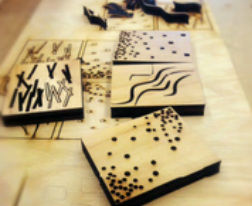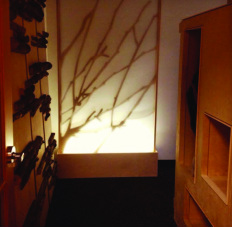Medication Space | Ithaca, New York | Fall 2012
Our studio class was approached by several organizations on campus, including Student Services, the Cornell Council on Mental Health, and Cornell United Religious Works, to collaborate in designing a meditation space on the Cornell University campus. A large set of parameters was associated with this project from the start, in which the behavioral consultants and designers had to take into high consideration throughout the planning and design processes. The three largest constraints that naturally guided the design were time, budget, and space limitations.
The purpose of this design project was to provide Cornell University students, faculty, and staff with a meditation space that allows them to escape the rigors and stresses of everyday life. It was our goal to create a space that:
• Reduces stress in users
• Encourages people to leave their burdens behind
• Allows users to feel safe and secure
• Does not have a specific cultural/spiritual association
• Supports the needs of people of all sizes, including those in wheelchairs
• Provides organized storage solutions
• Controls auditory stimulation
• Provides users with a connection to nature
• Prevents crowding
• Is adaptable for both individual and group meditation
My specific group was involved in the concept development and all planning, design, and construction phases of the seating elements within the room.
Our studio class was approached by several organizations on campus, including Student Services, the Cornell Council on Mental Health, and Cornell United Religious Works, to collaborate in designing a meditation space on the Cornell University campus. A large set of parameters was associated with this project from the start, in which the behavioral consultants and designers had to take into high consideration throughout the planning and design processes. The three largest constraints that naturally guided the design were time, budget, and space limitations.
The purpose of this design project was to provide Cornell University students, faculty, and staff with a meditation space that allows them to escape the rigors and stresses of everyday life. It was our goal to create a space that:
• Reduces stress in users
• Encourages people to leave their burdens behind
• Allows users to feel safe and secure
• Does not have a specific cultural/spiritual association
• Supports the needs of people of all sizes, including those in wheelchairs
• Provides organized storage solutions
• Controls auditory stimulation
• Provides users with a connection to nature
• Prevents crowding
• Is adaptable for both individual and group meditation
My specific group was involved in the concept development and all planning, design, and construction phases of the seating elements within the room.













